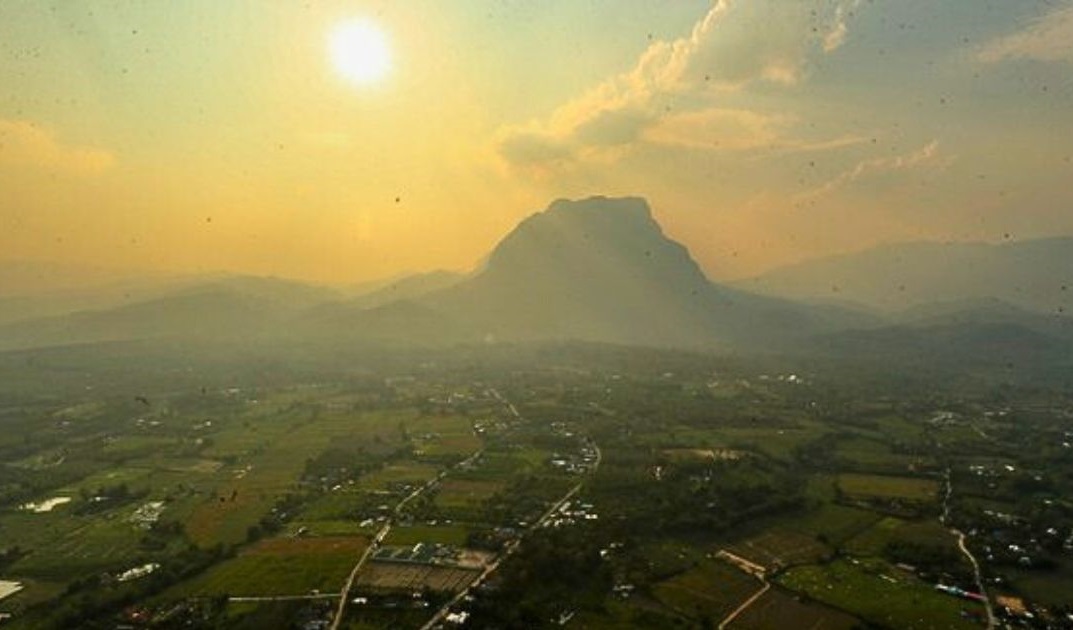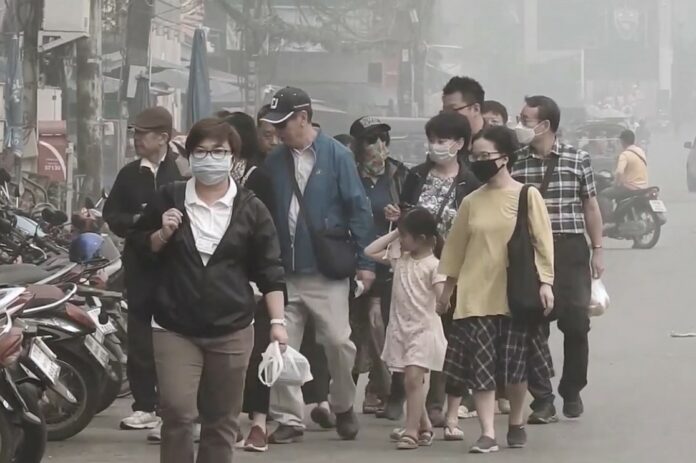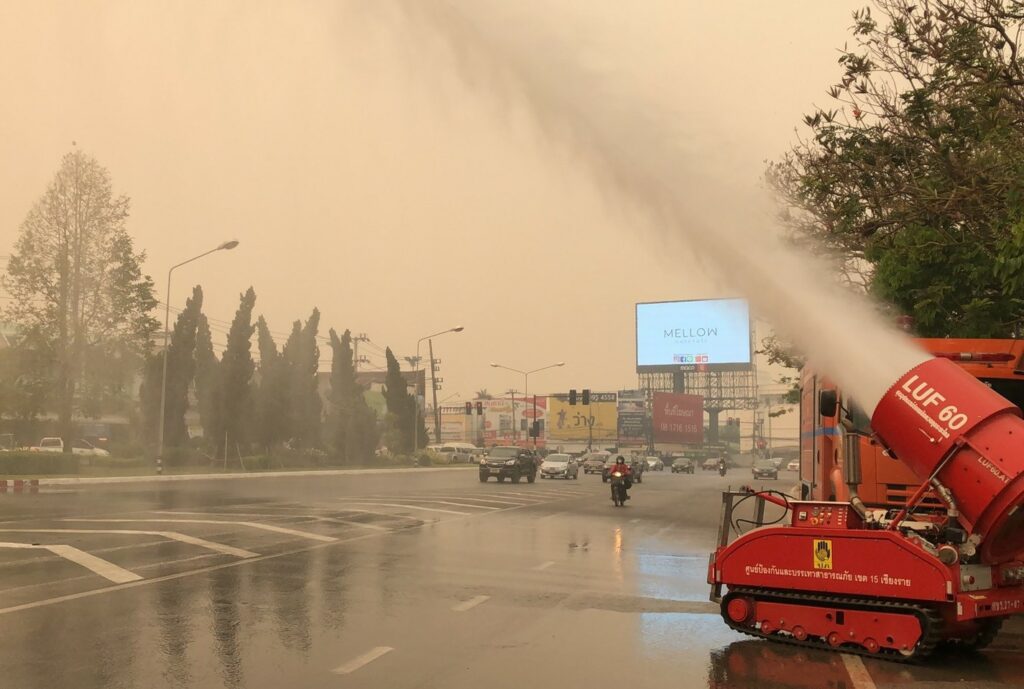On Monday morning, a dangerously thick haze covered 37 of the 77 provinces in Thailand, primarily in the north, where Chiang Rai residents were exposed to the highest levels of deadly PM2.5 dust particles.
The Geo-Informatics and Space Technology Development Agency (Gistda) reported at 11 a.m. on Monday that seven northern provinces had experienced red (seriously harmful) levels of particulate matter 2.5 micrometres or less in diameter (PM2.5) ranging from 80.5 to 107.5 microgrammes per cubic metre of air in the previous 24 hours. The government-set safe threshold is 37.5 µg/m³.
The most toxic PM2.5 dust level was 107.5 in Chiang Rai, followed by 103.8 in Chiang Mai, 92.8 in Phayao, 87.8 in Mae Hong Son, 82.9 in Nan, 80.6 in Lamphun, and 80.5 in Lampang. Thirty other provinces, especially in the Northeast, had orange (first dangerous) PM2.5 values measured. The values ranged from 37.9 to 72.4 µg/m³.
Provinces in the lower Central Plains, East, and South reported moderate to good air quality. Samut Songkhram has the best air quality (15.0µg/m³ of PM2.5), followed by Narathiwat (15.4µg/m³).
On Friday, Prime Minister Srettha Thavisin wrote on X social media playform that the administration was doing everything it could to prevent haze and assist impacted people, but that burning persisted in the country and adjacent areas.
On Monday, Chiang Mai Governor Nirat Pongsitthaworn informed reporters that local administrative bodies and hospitals would have clean air rooms and face masks ready for people.
According to the Faculty of Medicine at Chiang Mai University, PM2.5 pollution is a key contributor to the increased prevalence of lung cancer and has a serious impact on respiratory and cardiovascular patients. Over the last two weeks, the number of patients with nasal bleeding, eye irritation, asthma, and rashes has grown.
Haze, a severe air pollution phenomena, has become a recurring environmental concern in Northern Thailand, fueled mostly by agricultural burning activities. The region’s mountainous geography and dominating wind patterns compound the problem by trapping smoke from forest fires and the widespread burning of crop residues and agricultural waste.
The toxic PM2.5 haze consists of significant amounts of hazardous particulate matter (PM2.5) and other pollutants, which provide grave risks to human health, especially respiratory issues. Respiratory problems, cardiovascular concerns, and worsened conditions like asthma have been reported during haze episodes.
The persistent use of open burning persists due to entrenched cultural practices, inadequate monitoring, and economic incentives, despite the authorities’ attempts to enforce laws and encourage alternative farming techniques.
In order to mitigate the effects of transboundary haze, a comprehensive strategy is necessary, which involves more stringent enforcement, the adoption of sustainable agriculture methods, the implementation of public awareness campaigns, and the fostering of regional cooperation.
Thailand Cracks Down on E-Cigarettes and Vapers at Schools








